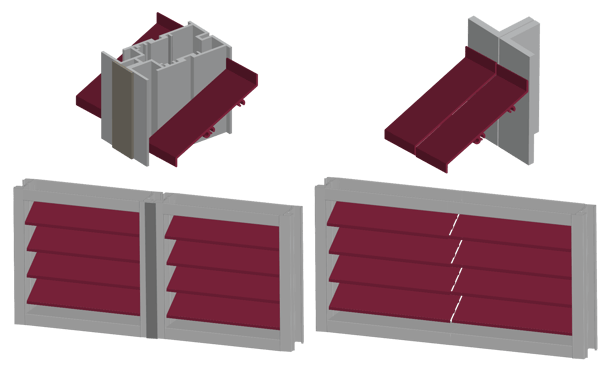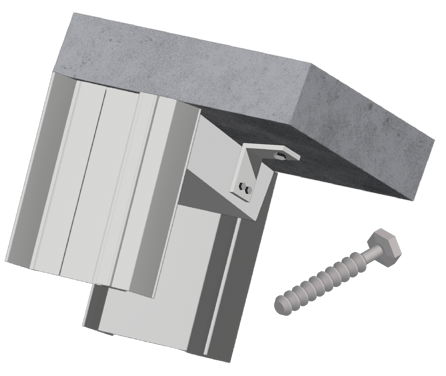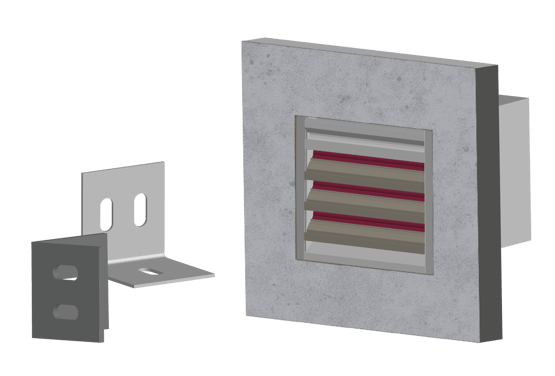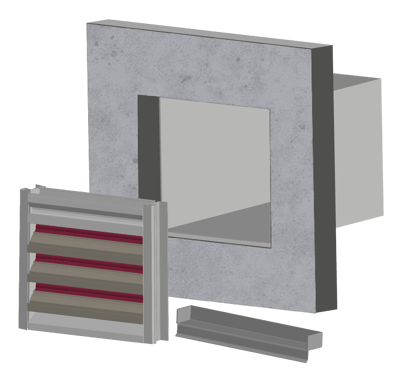Performance is important, and so is location. You need louvers that fit. Here are four questions to ask about your installation area.
Where are Your Louvers Going?
Louver selection can be an arduous process. You must answer several questions before you find the right louver for the task. What kind of louver do you need? Will basic weather protection work? Will the louver have adequate drainage? Of all the questions on your mind, you may not think about where the louver will be installed.

There are important variables to consider for the louver’s location. The louver should fit the opening, for one. It may come with additional parts that you need to account for, like a drain pan or an actuator. It should also have the necessary support. Here are four questions to ask yourself about the installation location and a few ways to answer them.
For more on louvers, check out these Newsstand articles:
- Louvers for Every Occasion? - Choosing for Various Applications
- Ten Important Traits of Highly Effective Louvers
- Seven Specialty Applications for Louvers
How big is the installation area?
This will be the first question you ask. The size of the installation area will help you determine the size of the louver, but the numbers may not match exactly. Manufacturers will often “undersize” a louver, so that the finished product is smaller than the size given. By default, they will subtract ¼ inch from the length and width of the louver. This reduction in size is made to account for thermal expansion.
Excessive heat will cause the metal to expand. The amount of expansion is small, but it can cause damage if you don’t account for it. Check out "The Big Three" for more information on the metals commonly used in louvers.
If exactly sized, the louver could be damaged when it expands, or it could even damage the surrounding area.

On the left: a two-panel louver assembly with a visible mullion. On the right: a two-panel louver assembly with a hidden mullion.
For larger areas, you should also know the maximum panel size of the louver. This will determine if your louver will be a single panel, or if it must be assembled as a multi-panel assembly. Multi-panel assemblies will ship as individual panels, which are fastened together in the field.
The assembly will have mullions – structural dividing lines – between the individual panels. Some louvers will have a “continuous line” option to hide vertical mullions, so that horizontal blade profile is uninterrupted across the assembly.
Consider the size of the installation area when choosing the right louver.
What is the opening made of?

This question will pertain to louvers installed in ventilation openings, but it can also be an important detail for free-standing louvers. Ventilation points are key features of a building's façade. They can be found along any wall, whether the wall is made of metal or masonry.
Even a wooden wall can have a ventilation point along its surface. It is important to know the material that makes up the wall when choosing a louver. This is commonly referred to as the substrate. The material of the substrate will determine which fasteners are used to anchor the louver to the opening.
These fasteners are typically provided by the manufacturer, but you should know which fasteners apply to your louvers. You may also need additional support in place to safely install the louver in the substrate. Larger and heavier louvers will need more support to stay fastened to the substrate. In many cases, the manufacturer will work with you to determine the best installation.
How much support is required?

Support is important. Louvers can come in different shapes and sizes, but they will all need adequate support to perform their intended role. All louvers require a certain amount of support.
By default, louvers will come with angle clips, fastened to the back of the louver and to the opening substrate. The number of clips used will depend on factors, such as the louver's wind load requirements. Excessive wind can potentially unseat the louver or cause a multi-panel assembly to come apart.
Naturally, heavier louvers will require more support. A steel louver will need more than an extruded aluminum louver to stay fixed in an opening. Without adequate support, a heavy louver could fall out of its opening and cause damage.
You may also need to reinforce the substrate to install the louver. Certain louvers, like FEMA-rated louvers and hurricane louvers, will have specific requirements for structural support. Consult with the manufacturer when choosing larger louvers. They can help you determine what you need.
What accessories come with the louver?

Accessories, like drain pans, can add functionality to a louver or aid the louver in fulfilling its application. They may also take up additional space in the installation area. A drain pan won’t need much space to perform its task, but an actuator will need extra clearance. Consider the space required when adding accessories to a louver.
You may have options that save space. For instance, you may choose to install an actuator on the face of the louver, to save space at the jambs. This option will affect the louver’s air performance because the actuator will be in the air stream. Determine the amount of space you need in the install area, then add accessories that fit.
Location is important. Understand where your louvers will go when planning your project. The right louver fits the opening, meets the requirements, and efficiently performs its task.
Do you have a question on something we haven't covered here? Or do you need help from industry experts? MCDLG can help. Contact us by clicking on the button below.
.webp?width=91&height=70&name=MCDLG%20Logo%20(Resize).webp)
.webp)




